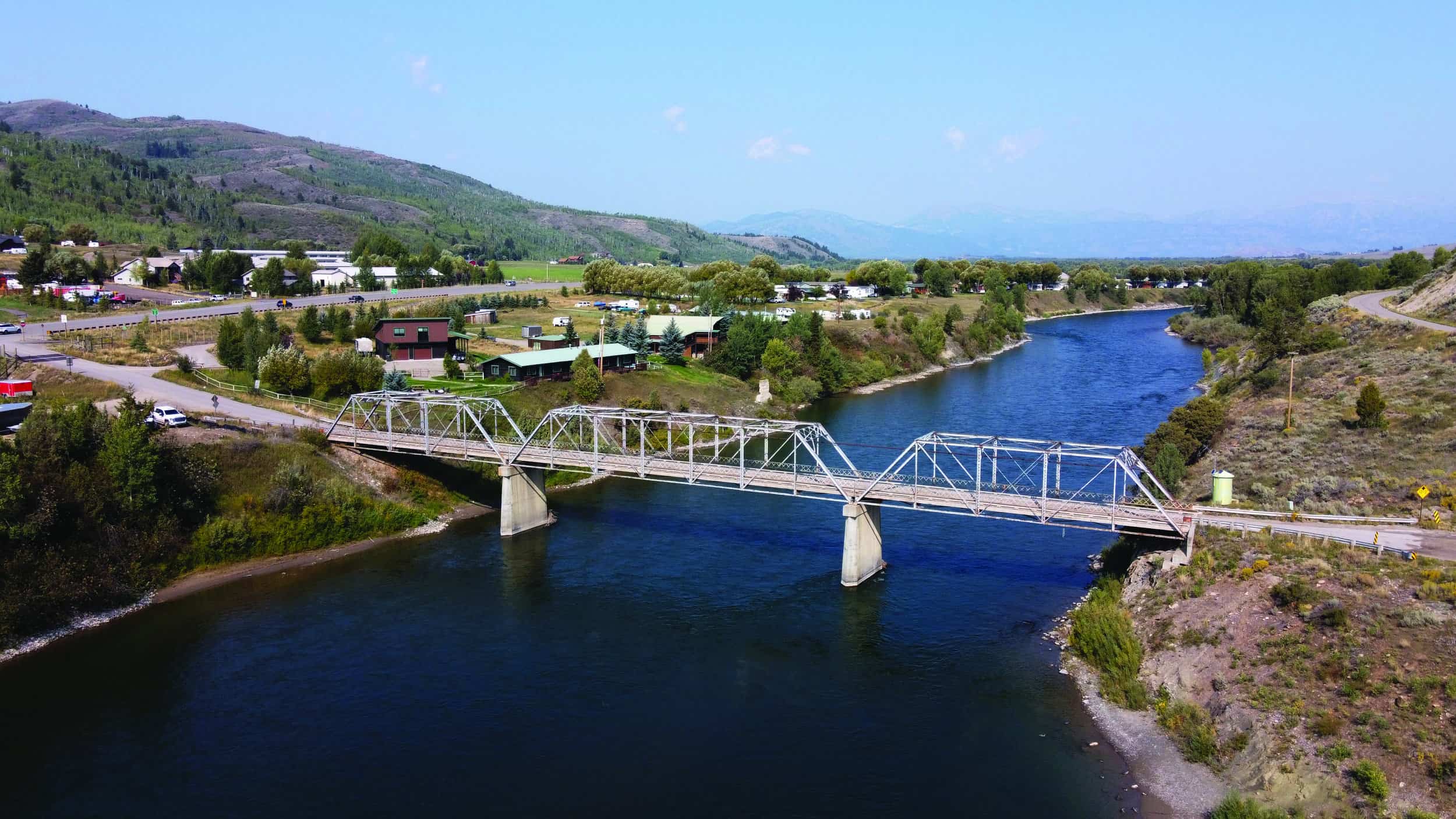Read The
Current Issue
Bridges to the Past
Astoria and Swinging Bridges have more than a century of history.
// By Jim Stanford
On Feb. 21, 1922, at a ceremony attended by a host of local dignitaries, Jean Pierson, wife of project engineer J.E. Pierson, drove the last spike in the newly completed Jackson-Wilson Bridge over the Snake River. The Jackson’s Hole Courier called the occasion “one of the most important events in the history of Jackson’s Hole.” At 657 feet, the five-span truss bridge was by far the longest in the state, and its completion marked the end of a difficult struggle to extend a crossing first erected in 1915 but partially washed out by the river in 1917.
More than a hundred years later, the steel truss spans with wooden decks continue to serve the motoring public, albeit at different locations: Swinging Bridge and Astoria Hot Springs. The original bridge was decommissioned in October 1959, and the pieces were shipped south of town for reassembly. By the fall of 1960, the spans—three at Swinging Bridge and two at Astoria—were put in place where they remain today. Swinging Bridge doesn’t “swing;” the name is a reference to the light-duty suspension bridge that preceded it in 1938 and the A-frame footbridge before that.
The sibling truss bridges of Teton County hearken back to a time when engineers put structural elements above the deck where they could be appreciated, in contrast to, say, the new WyDOT bridge at Horse Creek, where all of the structure is hidden below. “A bridge represents a pretty unique aspect of our past,” says Kurt Dubbe, an architect and member of the Teton County Historic Preservation Board. “Folks have such strong memories of the built environment around us. We’re drawn to those memorable icons.”
Although the Swinging and Astoria Bridges are adored for their historical and aesthetic value, they face an uncertain future due to declining practical value. In addition to a century’s worth of normal decay, both have been damaged in recent years by trucks too large for the 12- to 13-foot height clearance hitting their steel frames. Teton County is looking to replace Swinging Bridge and possibly repurpose it for pedestrians and cyclists, while engineers are studying the privately owned Astoria Bridge to determine its fate.
Dubbe has been active in trying to preserve Swinging Bridge, which he says has local, state, and even national historical significance. “It represents a strong engineering past that is fast disappearing,” Dubbe says. JH





